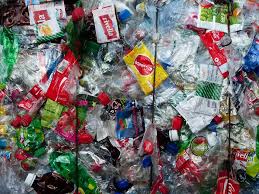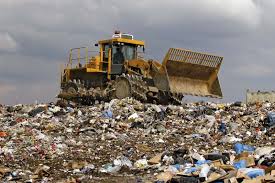Recycling and Reuse Alternatives to Waste Management
The causes and techniques for better Management of trash or other household waste are outlined in this article. While “recycle” may be a catchphrase for an effective and efficient waste management strategy, the “Three (3) Rs” represent a more complete method.
(1) Reduce: Get only what you want because preventing waste creation is a better strategy to reduce it.
(2) Reuse: If you need to buy something, consider buying secondhand items or looking for alternatives.
(3) Recycle: When disposing of your trash, look for opportunities to recycle it as opposed to letting it end up in a landfill.
We are producing more waste as a country, yet we are unsure of how to dispose of it. The improper or negligent disposal of this trash can harm the environment and the general public’s health. Existing landfills are becoming increasingly full. People are learning that there is no simple method to dispose of the trash; previously, they believed it could be dumped or burnt and forgotten.
Currently, just a small portion of American waste is recycled. The advantages of recycling include financial savings or “avoided costs,” as well as the sale of recovered materials and resource conservation.

Our health, safety, and the environment are all at risk from current disposal practices, which also increase direct costs to society. Nowadays, the majority of commercial, industrial, and domestic trash is disposed of in landfills or dumpsites.
This kind of waste treatment can contaminate streams, rivers, and groundwater. Burning garbage produces poisonous gas emissions into the atmosphere as well as toxic ash deposits. In one way or another, these waste byproducts get into people and animals.
Read Also : How to Recycle Appliance Wastes (Appliance Recycling)
As briefly indicated in the introduction, the following are the strategies involved in the reduce, reuse, and recycle.
(1) Reduce
The most important waste management strategy is cutting back on how much you purchase. Only buying what we actually desire and in the proper quantity is the key.
If we don’t produce anything in the first place, we won’t need to mine raw materials, create products from scratch, develop packaging, use more resources to convey them, and then figure out how to get rid of them
Limiting your purchases can assist in reducing waste.
Each individual contributes to the issue of waste management. Each home can help to lessen the issue by cutting less on garbage. Start by examining the items you discard and the necessities for your home.
One of the key actions customers may take to lessen waste are:
(1) Selecting necessities over wants: People who constantly upgrade their technology (like telephones) to the newest models run the risk of wasting money and unnecessarily using up natural resources.
(2) Purchasing high-quality goods may cost more, but they will likely perform better, endure longer, and cause fewer problems than inferior goods.
Choose sturdy goods like silverware, reusable cups, and reusable water bottles in place of disposable ones.
(3) Using little packaging: Plastic bags, boxes, packing peanuts, and plastic wrappers are among the packaging materials that frequently end up in landfills. Bring your own bags so you won’t have to rely on plastic ones.
Use paper bags rather than plastic ones if you don’t have any shopping bags because they degrade more quickly.
Reusable bags are frequently available for purchase at the register, and some shops even provide customers with discarded plastic bags.
(4) Purchasing locally produced goods helps to lessen the harmful effects of transportation on the environment while also boosting the local economy.
(2) Reuse
Many people find the thought of being wasteful unsettling. However, the majority of us still waste because we are unable to come up with a better use for items like the phone book, overly short drapes, or a scratched closet door.
Because of our conditioning, we tend to disregard the effects of our actions when disposing of items that are worn out, broken, unattractive, or otherwise damaged.
As seen by overstuffed attics and garages, the majority of Americans purchase much more than they can actually use.
Examples of reuse include the following.
▪ You can use the same containers for projects at school or at home.
▪ Reuse boxes, lumber, wrapping paper, and plastic bags.
▪ Provide friends or a charity with outdated clothing.
▪ Drinks should be purchased in returnable containers.
▪ Donate broken appliances to a local charity or vocational school so that students can practice repairing them or utilize them in art classes.
▪ Offer to friends, charities, or those in need any furniture or household things you no longer require.
▪ You can use old towels and sheets that have been chopped into little pieces as dust rags.
▪ You can donate books and periodicals to nursing homes, public libraries, and schools.
Newspapers can be donated to pet retailers.
▪ Foams, plastic quilting, and other packing supplies can be kept and used once more for packing.
▪ When you go shopping, bring a recyclable tote bag or bags with you to the store. There are stylish nylon fabric bags available that fit conveniently in your car’s glove box. You can also use sturdy canvas bags, which require very little storage space while not in use.
(3) Recycle
The principal advantages of recycling are:
▪ Recycling creates jobs: As more people in New Mexico recycle, more materials will be produced. Manufacturing facilities will start to appear to find uses for these recycled materials.
We will learn more about the entire process as more recycling facilities are constructed and as more products are produced.
▪ Recycling generates jobs: According to the EPA, recycling 10,000 tons of materials would result in 36 jobs, as opposed to six if the same amount were dumped in landfills (EPA, 2002).
Some communities have created and managed job-training partnerships, partnered with workshops for the disabled, or in other ways found employment for unemployed workers in recycling initiatives.
It is important to effectively implement the Reduce, Reuse, and Recycle campaign in order to encourage improved waste management.
You would be better off donating the old jeans and using reusable shopping bags rather than turning an old pair of trousers into a bag that requires constant maintenance.
Some initiatives could have a long learning curve and take practice to become adjusted to. Although sorting recyclables can be difficult at first, after you get the feel of the method, the associated tasks will come naturally to you.
Read Also : How Waste Papers, Metals, Woods, Glasses, and Plastics are Recycled
In conclusion, the most obvious alternatives to disposing of waste in a landfill are recycling and reuse. Numerous materials can be recycled, at least in part, and recycling may even have financial advantages.
For further questions kindly use the comment box provided below for all your questions and if this article was helpful, please share with us to also benefit from its information.


